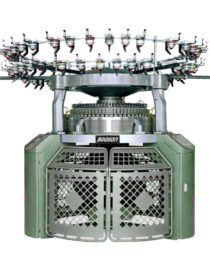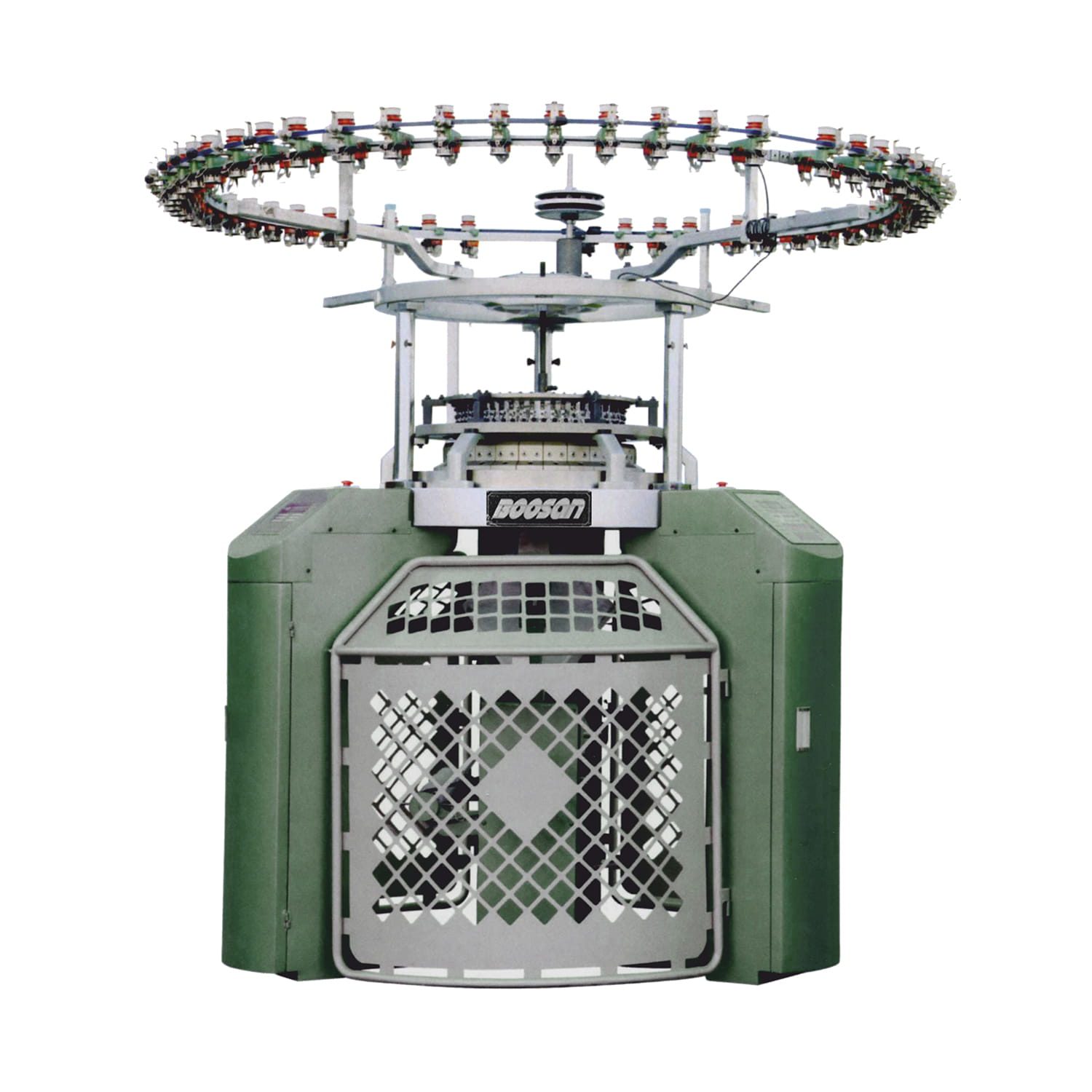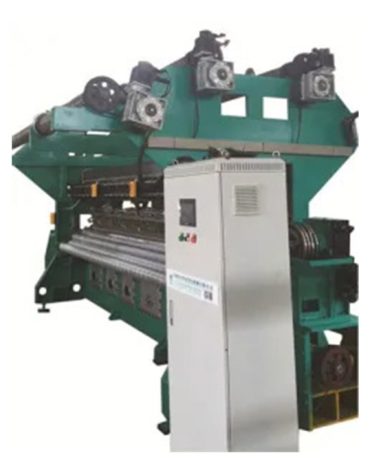- You have no items in your shopping cart
- Continue Shopping
Кругловязальная машина Джерси ( узкая)
After the weaving most common method of manufacture textile products is knitting. To understand the Circular knitting machine we have to understand what is the knitting?
There is two main way to textile techniques to knit. Weft and Warp Knitting. The difference in weft and warp knitting originates in the way the needles move during the production and in the way the yarn is supplied. Weft knitting is a one fibre technique, which means that only one fibre is needed to build the stitches. The needles are moved separately.
However, in the warp knitting technique needles are moved simultaneously. Therefore, all needles need the fibre material at the same time. Most important knitwear fabrics are circular knitted, warp knitted, flat-knitted fabrics and fully-fashioned fabrics.
Circular knitting machines always produce a tube-shaped fabric. They exist in different sizes or diameters, depending on the field of application. The needles and sinkers in these machines are arranged in a circle. The machines can be divided into two different types, depending on the number of sets of needles one of them is single set; plain and the other one is two sets: rib, interlock, spacer fabric.
Common products that are produced with circular knitted fabric are T-shirts. For production, nearly every material can be used. The form varies from filament to staple fibre yarn. For special purposes, also monofilaments and wires are used. Machines that possess just one set of needles are only able to produce plain- knitted structures.
For the production of this kind of fabric, two needle sets are necessary and the needles need to be arranged in a different way.
The loops are formed in two different directions. The result is a fabric with smooth surfaces on both sides. This is due to the right loop structure on each side. The rib structure shows rib loops on both sides of the fabric.
Until now, circular knitting machines have been designed and manufactured for mass production of knitted fabrics. The special properties of knitted fabrics, especially fine fabrics made by the circular knitting process, makes these types of fabric suitable for application in clothing, industrial textiles, medical and orthopaedic garments, automotive textiles, hosiery, agro and geo textiles, etc. The most important areas for discussion in circular knitting technology are increasing production efficiency and improving fabric quality as well as new trends in quality clothing, medical applications, electronic garments, fine fabrics, etc. Famous manufacturing companies have pursued developments in circular knitting machines in order to extend into new markets. Textile specialists in the knitting industry should be aware that tubular and seamless fabrics are highly suitable for various applications not only in textiles but also in medical, electronic, agriculture, civil and other fields.
Principles and classification of circular knitting machines
There are many types of circular knitting machine that produce long lengths of tubular fabric manufactured for specific end uses. Single jersey machines are equipped with a single «cylinder» of needles that produces plain fabrics, about 30 inches in diameter. Wool production on single jersey machines tends to be limited to 20 gauge or coarser, as these gauges can use two-fold wool yarns.
Another inherent feature of woollen single jersey fabrics is that the fabric edges tend to curl inwards. This is not a problem whilst the fabric is in tubular form but once cut open can create difficulties if the fabric is not finished correctly. Terry loop machines are the basis for fleece fabrics that are produced by knitting two yarns into the same stitch, one ground yarn and one loop yarn. These protruding loops are then brushed or raised during finishing, creating a fleece fabric. Sliver knitting machines are single jersey machines that have been adapted to trap a sliver of staple fibre into the knit structure.
Double jersey machines are single jersey machines with a «dial» that houses an extra set of needles positioned horizontally adjacent to the vertical cylinder needles. This extra set of needles allows the production of fabrics that are twice as thick as single jersey fabrics.
| модель | |
|---|---|
| Диаметр | |
| Калибр | |
| Питатель | |
| Используемые материалы | Искуственная шерсть, Синтетическое волокно, Смесь, Хлопок, Шелк |



















